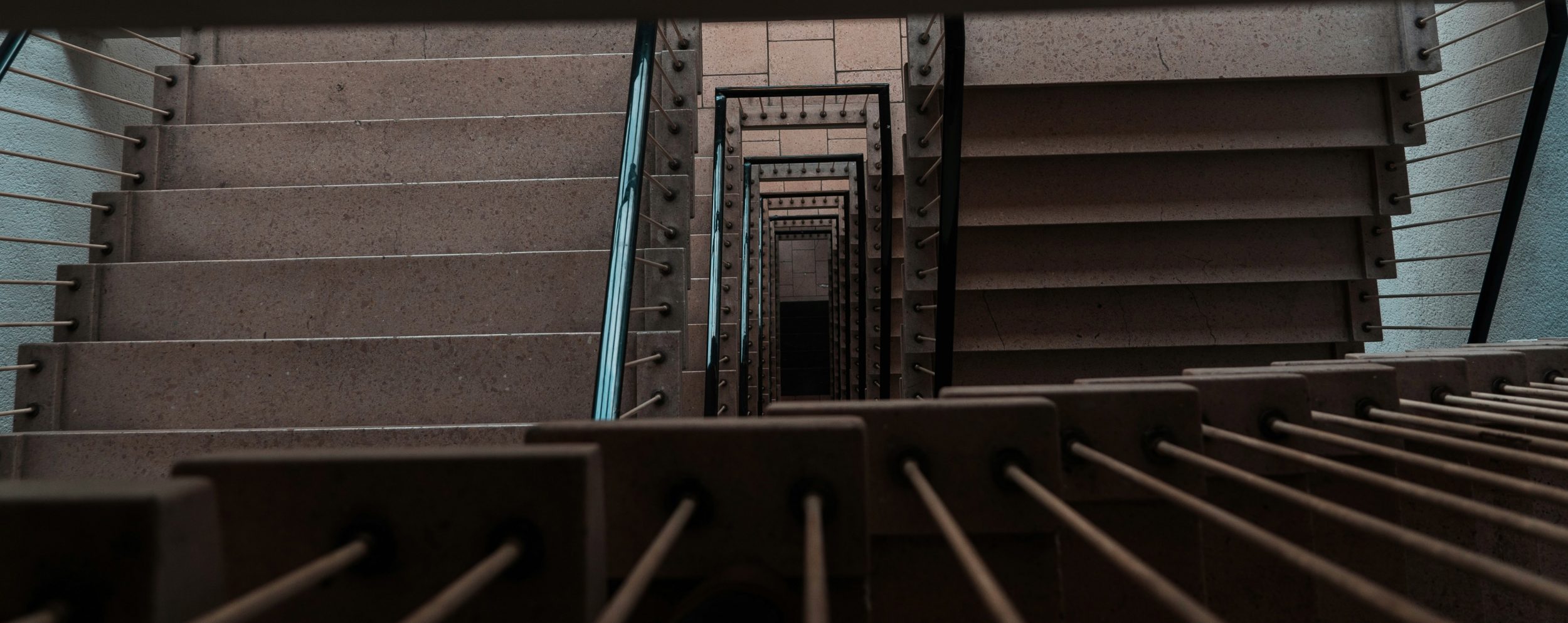
Learning from Golden Gulag, we discuss what abolitionists gain strategically by taking seriously the complex structure of financial and hierarchical relationships between state agencies at different scales. Court orders, jurisdictional devolution, interagency payment streams, and the political blocs that have formed to fight over them have created very different organizing terrains in different places, even when developments may look the same on the surface. Comparing shifts in incarceration in California, Louisiana, and Kentucky, we consider how distinct pro-incarceration blocs have institutionalized their visions for how things should change, what can be done to whom, and who should be on the hook to pay for it. We argue that a firm grasp of these details should directly inform how we think about building an anti-carceral front and taking local action to divide theirs.
Judah Schept: Golden Gulag, published in 2007, examined the ways California responded to political economic crisis through massive state investment in its prison system. While the state helped to design and build what we have come to call the prison–industrial complex, the book proposed a methodology to study and analyze it. Not long after the book was released, a really big change took place in how California incarcerates as a result of the Supreme Court’s 2011 Brown v. Plata decision. Ruthie and Craig, can you start us off by sharing some about that ruling and what happened as a result of it?
Ruth Wilson Gilmore: In Brown v. Plata, the Court ordered California to drastically reduce the size of its incarcerated population—which meant that California could not try to simply build its way out of the deadliness of its prison system as it had previously done through the massive prison expansion that Golden Gulag details. That ruling was the result of decades of legal fights in federal courts initiated by people incarcerated in state prisons. But the state’s response to the 2011 ruling followed paths already prefigured as “realignment” in other state agencies, which I hope Craig will explain.
More from our decarceral brainstorm
Inquest, finalist for the 2025 National Magazine Award for General Excellence, brings you insights from the people working to create a world without mass incarceration.
Sign up for our newsletter to get the latest in your inbox every Saturday.
Newsletter
Craig Gilmore: The example Ruthie raises is tied to the relationship between the state system and local jails. In 2011, as a result of Brown v. Plata, California redirected people convicted of “nonserious, nonsexual, nonviolent” felonies from prisons to county jails. This shift had been prefigured in the way that California realigned its juvenile justice system, which eventually resulted in California closing the Department of Juvenile Justice as an agency. Now juvenile incarceration all takes place in county and local lockups, not state prisons.
Unlike Louisiana and Kentucky, California doesn’t pay a per diem (that is, a per person, per day rate) to counties for incarcerating any substantial number of state prisoners. The tens of thousands of incarcerated people devolved to counties are not state prisoners held by counties; they are now county prisoners. The state paid out about a billion dollars to the counties to deal with public safety issues. What the counties do with that money is up to them—and, I think in many cases, up to the county sheriff. But this means that there’s no financial incentive for counties to lock up more people because they will not get any additional money for that confinement. On the contrary, it will increase their costs. Devolving all juvenile and some adult incarceration to the county level has really shifted the terrain of decarceral struggle in the state, making it much more local.
All of these shifts were taking place during Jerry Brown’s second administration as governor (2011–19), and one of the ways he was able to convince the legislature to enact the Supreme Court ruling in this particular way was by promising the correctional guards union that there would be no layoffs—and there weren’t. And the people who were being remanded to county jail were mostly going to be held in counties with unionized workforces. So public sector unions, the most powerful political force on the liberal left in the state of California, did not have a problem with this realignment.
Judah Schept: The conversation affirms some of the reasons why Lydia, Jack Norton, and I put together The Jail Is Everywhere, which features chapters from organizers fighting jail expansion around the country. Those author-organizers share urgent strategies about points of leverage that readers who may be involved in or anticipating their own jail fights can examine. But at the same time, just because a fight is taking place at the same scale of the state, that does not guarantee that successful movements in different states will automatically align in terms of strategy, points of leverage, or composition of political power. As you’ve just been saying, Craig, the jail expansion that’s happening in Kentucky does look fairly different from that in California.
To give a concrete example, just recently, Laurel County—a small and mostly rural county in eastern Kentucky of about 60,000 people—opened a new 600-bed jail with capacity to expand by another 300 beds. The county does lock up a lot of its own people, but it also relies on contracts with and patronage from other parts of the state—ICE, the U.S. Marshals, and the Kentucky Department of Corrections, agencies which pay the county per diems to incarcerate hundreds and hundreds of federal detainees and people sentenced by the state’s criminal legal system. That jail opened in 2020 and within two years, the county was reporting that the jail was financially “self-sufficient,” with the county allocating zero tax dollars for the jail’s operation. Of course, it’s anything but self-sufficient, as it relies completely on the payments that follow the incarcerated people from other agencies into its cages. Importantly, for an assessment of the terrain in Kentucky, the jail metabolizes that money—almost $3 million a year—into reproducing the jail itself, while likewise paying for other infrastructure, services like fire trucks, and even cost-of-living adjustments for county employees. Here we can see the importance of paying attention to those points of difference, for thinking about how money moves and how that relates to the political geography of custody, and what that means for splitting the forces coalescing around its expansion.
Lydia Pelot-Hobbs: This raises for me the question of what is the same and different about Louisiana’s expansion of its jails to incarcerate people sentenced to state time—and how it did so looked very different during the era of prison building versus during an era of prison closures. Louisiana began incarcerating some of the people sentenced to state time in jails in the 1970s when the federal courts started mandating population limits at the Louisiana State Penitentiary (better known as Angola) in response to overcrowding “crises.” This dynamic is similar to the realignment in California in the 2010s that Craig and Ruthie were discussing, but the difference is that, during the 1970s, Louisiana had Angola as its only main prison (aside from a separate women’s prison). In other words, Louisiana was not turning to jails in the face of permanent prison closures, but rather as a stopgap to solve a particular moment of legitimation crisis while the state was locking up more and more people.
This raises the question of how do different political blocs emerge in different places to influence carceral developments in the region. In Louisiana, the political blocs that shape the fate of prisons are also very different than in California. In Louisiana, it’s not correctional officers organized as a public sector union so much as it is the Louisiana Sheriffs’ Association—a nonprofit guild of elected parish sheriffs and their deputies. When the federal courts placed population limits on Angola and basically stipulated that parish jails would have to hold sentenced people who’d ordinarily be incarcerated in Angola, the sheriffs hated having those folks in their jails. The sheriffs argued that that wasn’t what their jails were for and that they couldn’t afford it. They protested until the legislature agreed to institute the per diem system in Louisiana as a nominal financial offering. But then the per diem system rerouted their political agitation in the opposite direction, as the Louisiana Sheriffs’ Association started to organize as a bloc to demand that the state incarcerate even more people sentenced to state time in the jails.
Wall Street and the global financial sector also plays a huge role in all of this. In the late 1980s and 1990s, Louisiana’s bond rating was severely downgraded—triple-B-plus, at one point—because it had such a bad debt-to-income ratio, and that included debt accrued from the massive wave of prison building in the 1970s and 1980s. This made any borrowing in the state’s name more expensive. So the state opted to expand jails to incarcerate state prisoners as a long-term solution, which would get around the debt issues in that the parishes, not the state, were officially the ones taking on the debt, softening the negative impact on the state’s bond ratings. This strategy allowed state officials to say that they were being “tough on crime” while also meeting the demands of New York finance to reduce on-the-books state borrowing. It’s a devolution that’s actually an expansion of Louisiana’s carceral infrastructure, carried out in this specific way because of actors navigating different financial and political constraints.
Judah Schept: It’s so important to recognize that expansion can takes all sorts of different forms. In Central Appalachia, there hasn’t been a prison built since 2004. That’s partly due to the success of organizing against the federal prison in Letcher County, but there hasn’t really been an effort to build new institutions since the wave of the 1990s and early 2000s leveled off. What has happened, though, is that in addition to the expansion of jails, the state of Kentucky has added on capacity to existing prisons, particularly in Eastern Kentucky, including reopening a decommissioned private prison, which it leases from CoreCivic.
Added capacity in existing prisons or jails doesn’t generate the same kind of media or activist attention as does new construction. FCI Letcher would cost half a billion dollars to build; we tend to pay less attention when it’s tens of millions of dollars toward a new or expanded jail or expansions to a prison, even as the material result is the same: more cages.
So-called carceral humanism—reformist reforms supposedly to make incarceration more humane—often plays a big role in this. In the examples we’ve looked at so far, court orders to remedy the dire conditions of overcrowded jails have played a significant role in driving carceral innovation. And it’s a phenomenon that doesn’t look the same everywhere. In Eastern Kentucky, where Jack Norton and I are currently doing some work, no one is talking about “extending social justice” through building a jail. At the same time, there is this emerging “treatment–industrial complex,” as one person called it, in the region: a serious and sprawling geography of different kinds of drug treatment that I’m not sure is actually all that distinct from the prison–industrial complex. There’s lots of relationships there to jails, judges, and sheriffs, and part of our work is to examine this complex political and legal geography. In Kentucky, there is harshly punitive legislation coming out of Frankfort, where an omnibus crime bill was just passed in 2024. At the same time, there also seems to be some kind of political consensus around the need for expanded drug treatment, albeit underwritten by the certainty of incarceration if one slips up.
Ruth Wilson Gilmore: Is participation in those Kentucky treatment beds voluntary? Can people come and go? Can someone leave when they want to?
Judah Schept: The answer to most of those questions is no.
Ruth Wilson Gilmore: Then the treatment beds are already carceral. Kind of classic carceral humanism.
Judah Schept: Yes, it just looks different from what we have seen in other places, where officials and others position newer jails as the extension of social justice or even racial justice to incarcerated people. But you’re right, it is just carceral treatment.
Ruth Wilson Gilmore: I think that, conceptually, identifying carceral humanism was never only about debunking efforts to legitimate incarceration in the name of “social justice,” but rather to describe an explanatory vocabulary and practice that justified expanding the use of involuntary immobility to a whole range of purposes, including drug treatment and homelessness. The use of the word “humanism” in this context is ironic without being in any sense funny or a joke.
Judah Schept: I totally agree.
Lydia Pelot-Hobbs: What I also hear you saying, Judah, is that there is a spectrum of those different discourses that exist within carceral humanism. Depending on where you are, it might manifest as “Let’s have a local jail! Keep things local!” or it can be framed as “Let’s have treatment.” Local histories of struggle have a lot to do with which justifications pro-incarceration blocs will invoke to shoehorn people’s consent into their vision for public spending on punishment and cages.
Craig Gilmore: This discussion of carceral humanism raises a key issue for our organizing, which is that organizers need to be thinking, “If this is the messaging we’re using to win now, how might it be used against us tomorrow?” In a lot of states people have been saying: “Our people, the people who are being locked up, have mental health issues. They may or may not have broken the law, but the main problem is not criminality, it’s mental health.” In California and elsewhere, we’re seeing a massive program of increasing involuntary commitment of people who are deemed to have substance abuse issues or other mental health issues. This has meant, for example, sweeps where homeless people are taken to newly established mental health facilities, which they cannot leave voluntarily. It’s incumbent upon us to be thinking forward, to ask, “How might this messaging bite us in the ass tomorrow?” This is key to waging campaigns in a way that both expands people’s consciousness and puts us in a better position to fight for more if we do win these shorter-term fights.
Image: Mitchel Willem Jacob Anneveldt / Unsplash




